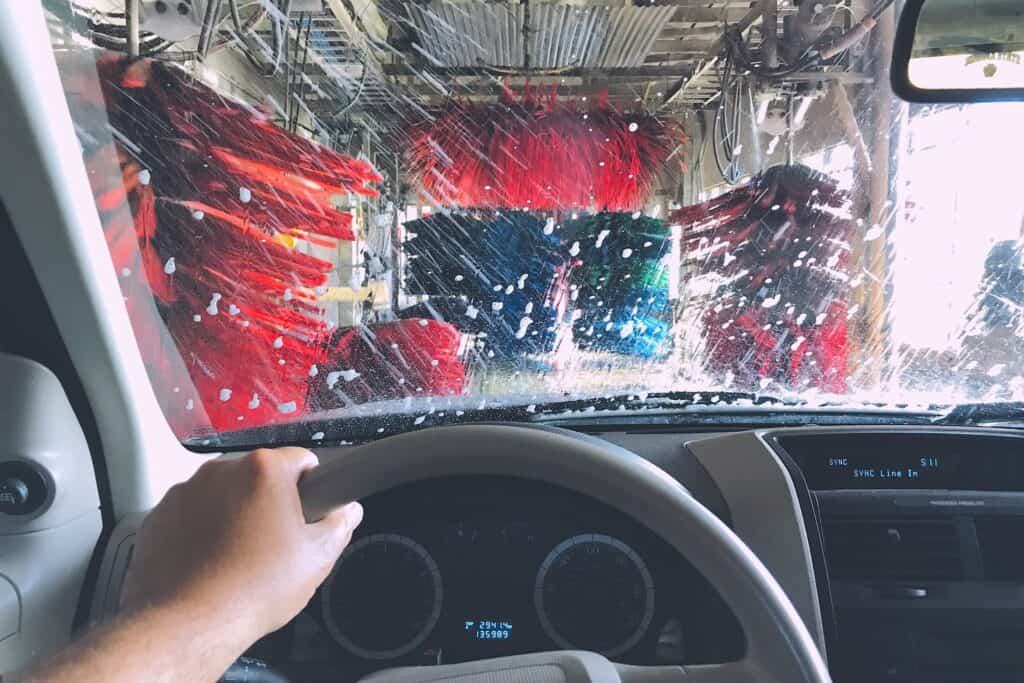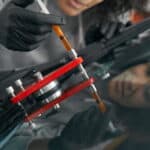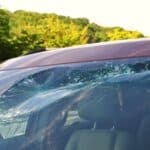Most drivers shrug off a windshield chip like it’s no big deal. It doesn’t block the view, doesn’t make noise, and frankly, it just sits there. But what seems harmless can spiral quickly into a costly repair. Left alone, that tiny chip becomes a silent threat to the integrity of the entire glass panel.
Professional windshield repair exists for a reason—it prevents that minor blemish from turning into a widespread fracture that compromises visibility and safety. The small impact mark is rarely the end of the story; often, it’s the beginning of a slow breakdown triggered by heat, pressure, and even routine driving. Understanding what makes windshield chips worse without realizing it can help drivers avoid the larger bill and bigger hassle that comes with replacement. In this breakdown, each subtle cause is unpacked to explain exactly how everyday conditions quietly make matters worse.
Everyday habits that worsen windshield chips
Drivers who’ve had a chipped windshield will recognize this all too well. A tiny speck one day turns into a spreading crack the next, and it’s often without any obvious cause. One experienced technician described repairing a chip that had grown overnight because the driver parked directly under a sunbaked metal awning. Heat and pressure teamed up silently. That chip didn’t stand a chance.
-
Chips can spread from stress alone
-
Damage can worsen without visible warning
-
Most drivers don’t realize what triggers the change
1. Temperature changes and windshield chips
Sudden shifts in temperature wreak havoc on auto glass. That’s especially true for glass already weakened by a chip. When a vehicle goes from intense cold to sudden heat—like cranking the defroster—it creates uneven expansion across the windshield. One side warms faster than the other, which causes stress fractures to grow.
-
Blasting hot air on a cold windshield can spread cracks
-
Sudden cooling, like pouring water on a hot surface, causes stress
-
Windshields can expand and contract slightly during extreme weather
According to the National Highway Traffic Safety Administration (NHTSA), improperly maintained windshields contribute to structural failures during crashes. That means cracks from heat damage could affect safety well beyond visibility issues.
2. Driving with a windshield chip
It seems harmless to keep driving with a chip until something changes. What most don’t consider is the constant vibration that happens during normal driving. Even smooth roads don’t guarantee safety. Minute jolts from steering, turning, and brake pressure subtly work at the damaged glass.
-
Road vibration can stretch even small damage
-
Steering wheel torque increases internal glass stress
-
Continued driving allows debris and moisture into the chip
The U.S. Department of Transportation reports that front windshields are part of the structural safety design of vehicles. A weakened windshield can compromise airbag deployment if left unaddressed.
3. Pressure from car washes
Modern car washes use high-pressure jets and rotating brushes that blast away dirt, but they don’t know where your chip is. Even touchless washes push water into the damaged spot. This intrusion creates added pressure behind the chip, which may not seem visible at first.
-
High-pressure water enters the crack and expands it
-
Automatic brushes slap the glass at high speed
-
Soap and water pressure can dislodge weakened resin
Consumer Reports has advised car owners to avoid car washes immediately after windshield damage, especially before repair has sealed the area properly.

4. Delaying chip repair too long
Time isn’t on the side of a windshield chip. Contaminants like dust, rain, and even windshield washer fluid can seep in, making repair less effective. The longer a chip is exposed, the more likely the resin won’t bond properly during repair. Once the damage spreads too far, the only remaining option is a full windshield replacement.
-
Dirt interferes with resin adhesion
-
Moisture can cause internal fogging or further cracks
-
Extended delays can lead to visual distortion even after repair
The Auto Glass Safety Council (AGSC) advises early repair for chips smaller than a quarter to prevent full replacement and preserve clarity.
5. Poor DIY windshield chip fixes
Retail repair kits seem like a quick fix. They promise a clean result, but they often lack the precision tools that trained professionals use. Applying resin without proper curing tools, alignment, and suction can leave bubbles inside the glass. This makes the damage worse—especially in low light or rain.
-
Low-grade resins don’t hold under stress
-
Home kits lack UV curing technology
-
Uneven fills cause visual distortion and can attract attention during inspection
The National Glass Association cautions drivers that improper repairs not only weaken the glass but also make future professional work more difficult.
6. Driving through extreme weather
Seasonal extremes cause expansion and contraction that put pressure on even undamaged windshields. Chips, however, have compromised surfaces. Freezing rain can fill the chip, freeze overnight, and force the crack outward. On hot days, glass becomes flexible and internal heat can make even hairline fractures grow.
-
Moisture inside a chip freezes and expands
-
Heat softens the edges of cracks, which worsens them
-
UV exposure can discolor exposed damage over time
Studies from the U.S. Energy Information Administration show surface temperatures on parked cars can reach over 150°F. That’s enough to change the structure of exposed auto glass.
7. Slamming doors or rough handling
Closing a car door may seem harmless, but it creates a brief wave of air pressure inside the cabin. When a chip exists, that pressure pushes outward from the inside. That flexing action—especially with repetitive slamming—can trigger a running crack. Driving over potholes or taking a hard turn also adds lateral pressure to the windshield.
-
Internal air pressure increases when doors close forcefully
-
Sudden movement jars the glass frame
-
Road bumps increase flex stress around the chip
The Insurance Institute for Highway Safety points out that vehicles rely heavily on unibody construction. A damaged windshield contributes less structural support, particularly during rollovers.

Key Takeaways for What Makes Windshield Chips Worse
Most of the time, it isn’t one single action that worsens a windshield chip. It’s a combination of environmental conditions, habits, and overlooked maintenance. Preventing further damage starts with understanding how small changes in routine—like parking in the sun or using a drive-thru car wash—can impact the glass. Acting quickly, and not relying on shortcuts, gives a much better shot at preserving the integrity of the windshield.
-
Temperature changes trigger expansion and crack growth
-
Driving with a chip exposes glass to constant pressure
-
Car washes and DIY fixes often create more damage
-
Delays invite moisture, dirt, and higher repair costs
-
Everyday habits like slamming doors add stress to chipped areas
Frequently Asked Questions
Why does a windshield chip spread on hot days?
Hot air causes the glass to expand unevenly, especially around the weakened area. This movement creates internal stress that pushes the crack outward.
Can a car wash really make a chip worse?
Yes. High-pressure water can force moisture into the chip, and automated brushes apply force that can deepen cracks, even if they’re not visible right away.
What’s the danger of ignoring a windshield chip?
Ignored chips can turn into full cracks, reduce visibility, weaken structural integrity during collisions, and sometimes interfere with airbag deployment.
Are DIY chip repair kits effective?
They can sometimes seal very small chips, but most lack professional-grade resin and tools. Improper use can lead to distortion or make the damage irreparable.
How soon should a chip be repaired?
As quickly as possible. Early repair prevents contamination and keeps the cost and scope of the damage low, especially before the chip spreads or fills with dirt.
Elite Windshield Repair LLC provides fast, reliable vehicle windshield repair services, specializing in fixing chips and cracks up to 10 inches. Founded in 2024, the company offers free mobile service across the North and South Shore, ensuring convenience for every customer. With a focus on quality, Elite Windshield Repair guarantees customer satisfaction by providing a 1-year warranty on all workmanship. The company also offers headlight restoration and windshield wiper replacements to keep your vehicle in top condition. Locally owned and operated, Elite Windshield Repair is committed to delivering exceptional service with every repair.












